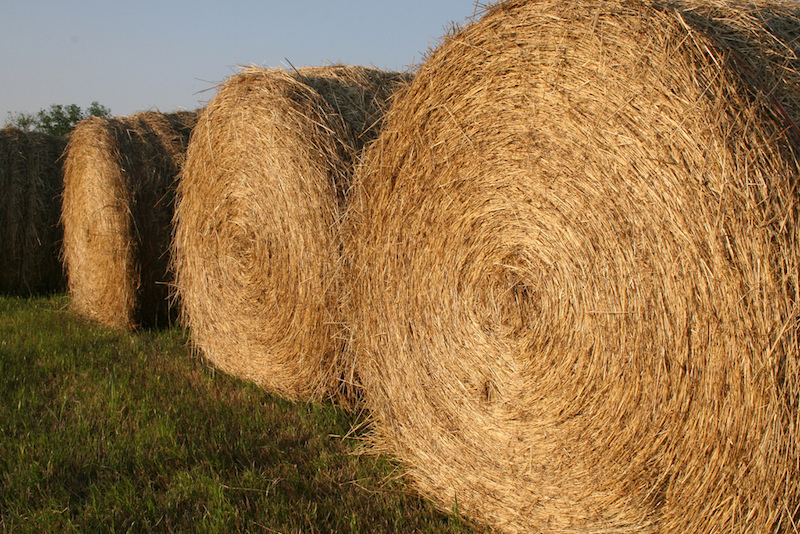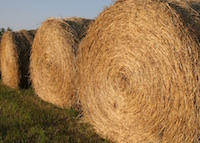When it comes to feeding hay to animals, not all hay is the same. Farmers who grow hay, and those who buy hay for their livestock, rely on a grading system called the Relative Forage Quality (RFQ) index to guide them on which hay to buy.
Past hay quality prediction equations were based on the fiber concentration of the hay crop. But hays can have similar fiber content and very different digestibility. For instance, Tifton 85 bermudagrass often has a higher fiber concentration than other bermudagrass varieties, yet it is more digestible. This improved digestibility results in enhanced animal performance, but is not reflected using traditional hay testing methods.
The Relative Forage Quality index was developed by the University of Wisconsin to predict the fiber digestibility and animal intake of harvested crops. Unfortunately, these equations were not applicable to warm season forages like bermudagrass, bahiagrass or perennial peanut. The University of Georgia approached the Wisconsin group in 2003 and proposed including warm season forage crops, so that a useful equation could be developed for the southeastern United States. Several hundred warm season samples have since been used to develop an RFQ equation for bermudagrass and other warm season forages.
Currently, all forage sample results from the UGA Feed and Forage Testing Lab in Athens contain an RFQ estimate. This value is a single, easy to interpret number that improves producer understanding of a forage’s quality and helps in establishing a fair market value for the product.
The index helps hay producers categorize and price hay lots by quality. Cattle producers can purchase hay lots depending on its end use. For example, there is little need to feed high-end quality hay to livestock that could easily use a lower quality forage.
Hay with a Relative Forage Quality index of less than 90 should not be considered acceptable for any class of livestock. Hay with a RFQ of 90 to 110 is acceptable, but may need supplementation depending on the class of livestock. Hay with a RFQ of 115 to 130 can be fed to maintain beef cow-calf pairs, with hay with an RFQ of 125 to 150 is adequate for stocker cattle or young growing replacement heifers. Hay with an RFQ of 140 to160 is suitable for dairy cattle in the first three months of lactation.
It is easy to see how the Relative Forage Quality index provides the framework for a quality hay marketing system.
For example, hay with an RFQ of 155 could conceptually be labeled “premium” hay, while hay with an RFQ of 105 could be labeled “fair.” This simple system allows producers to price hay consistently and fairly across harvest maturity, fertilization regimes or even plant species (i.e. bermudagrass, bahiagrass, perennial peanut or tall fescue).
For more information on growing or selling hay in Georgia, go to www.georgiaforages.com.








